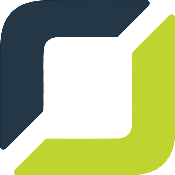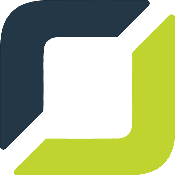As businesses face increasing pressure to improve efficiency, reduce costs, and adapt to rapidly evolving market demands, legacy system modernization has become a strategic imperative. According to Gartner, by 2025, 90% of current applications will still be in use but will require modernization in order to remain competitive.
For those responsible for balancing operational stability and innovation, choosing the right tools is essential to achieving meaningful outcomes including streamlined operations, reduced human error, and greater automation.
This blog highlights the top legacy modernization tools of 2025, designed to help consolidate systems, enhance adoption, and deliver actionable insights through dashboards and data visibility. These tools not only address technical challenges but also align with business goals to maximize ROI.
Cloud Migration Platforms
Migrating legacy systems to the cloud is often the first step in modernization. In recent years, cloud migration tools have matured significantly, offering advanced capabilities for seamless transitions.
AWS Migration Hub
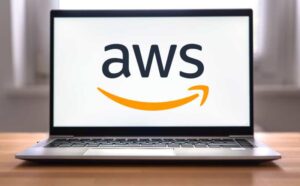 AWS Migration Hub provides a single location to track the progress of application migrations across AWS and partner solutions. It supports discovery, assessment, and migration, integrating with services like AWS Application Migration Service for automated server migration. For IT directors and managers, it reduces the complexity of managing multi-application migrations, enabling phased transitions and minimizing downtime risks.
AWS Migration Hub provides a single location to track the progress of application migrations across AWS and partner solutions. It supports discovery, assessment, and migration, integrating with services like AWS Application Migration Service for automated server migration. For IT directors and managers, it reduces the complexity of managing multi-application migrations, enabling phased transitions and minimizing downtime risks.
Key Features
- Centralized tracking
- Automated migration workflows
- Integration with AWS services
Why It Matters
Enables phased migration, minimizes downtime, and ensures compatibility with cloud-native tools. By providing visibility into each migration step, it ensures IT teams can manage resources effectively and achieve a seamless transition.
Azure Migrate
Azure Migrate offers end-to-end visibility and guidance for migrations to Azure. It includes tools for assessing on-premises workloads, estimating costs, and identifying dependencies between applications. The platform also supports database migrations and integrates with Azure Arc for hybrid cloud environments, providing robust support for enterprises transitioning to hybrid or multi-cloud models.
Key Features
- Comprehensive assessment tools
- Workload management
- Hybrid cloud compatibility
Why It Matters
Supports multi-cloud environments, addressing common enterprise IT architectures. Its strong focus on pre-migration assessments and hybrid cloud support makes it a versatile choice for organizations with complex, distributed IT systems.
Low-Code Development Platforms
 Low-code platforms accelerate modernization by enabling faster development cycles with reduced dependency on specialized developers. They are particularly effective for modernizing front-end interfaces and integrating legacy back-end systems.
Low-code platforms accelerate modernization by enabling faster development cycles with reduced dependency on specialized developers. They are particularly effective for modernizing front-end interfaces and integrating legacy back-end systems.
Mendix
Mendix empowers IT teams to create and deploy applications quickly, making it an ideal solution for rapidly evolving business needs. Its drag-and-drop interface simplifies application development, while AI-driven recommendations enhance the efficiency of design processes. Pre-built templates ensure consistency and accelerate development cycles, particularly for enterprises needing to modernize multiple applications simultaneously.
Key Features
- Drag-and-drop interfaces
- Pre-built templates
- AI-driven recommendations
Why It Matters
Promotes faster prototyping and user-centric design, ensuring stakeholder alignment. This helps organizations maintain agility while addressing core business requirements with minimal disruption.
OutSystems
OutSystems offers a comprehensive platform for building scalable, enterprise-level applications with advanced integration capabilities. Real-time performance monitoring ensures that applications meet user demands, while built-in connectors simplify integration with existing systems, including legacy architectures. For scalability, it is a premier choice for organizations planning long-term growth and modernization.
Key Features
- Real-time performance monitoring
- Advanced integrations
- Enterprise-grade application scalability
Why It Matters
Offers the flexibility to extend existing systems without extensive rework. This reduces technical debt and ensures IT teams can focus on delivering high-value projects.
API Management Tools
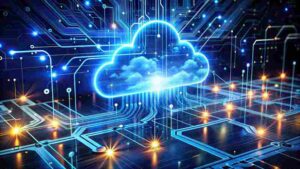 Modernizing legacy systems often involves exposing data through APIs to enable integration with modern applications. API management tools play an essential role in securing, monitoring, and optimizing these connections.
Modernizing legacy systems often involves exposing data through APIs to enable integration with modern applications. API management tools play an essential role in securing, monitoring, and optimizing these connections.
MuleSoft Anypoint Platform
MuleSoft Anypoint Platform offers a unified solution for API design, development, and management. Its lifecycle management capabilities enable IT teams to create, deploy, and monitor APIs effectively. In-depth analytics provide visibility into API usage patterns, while enterprise-grade security ensures data protection and compliance. The platform also supports seamless integration with legacy systems, allowing businesses to expand capabilities without requiring full system overhauls.
Key Features
- API design & lifecycle management
- Advanced analytics
- Enterprise-grade security
Why It Matters
Simplifies system interconnectivity, allowing businesses to leverage existing investments while expanding capabilities. By enabling a connected architecture, MuleSoft fosters innovation and scalability.
Postman API Platform
Postman is a comprehensive API platform that facilitates collaboration among developers and stakeholders. Its automated testing ensures API reliability and performance, while its documentation tools simplify knowledge sharing and onboarding. The platform’s intuitive interface and extensive integration options make it a favorite for both small teams and large enterprises looking to enhance development workflows.
Key Features
- Collaborative API design
- Automated testing
- Streamlined documentation
Why It Matters
Improves development efficiency and ensures API reliability. Postman’s focus on collaboration and automation reduces bottlenecks and enhances the quality of APIs, ensuring smoother integration between systems.
Data Integration & ETL Tools
Data consolidation is a common goal of modernization. Extract, Transform, Load (ETL) tools and data integration platforms help unify disparate data sources, ensuring consistency and accuracy.
Talend Data Fabric
Talend Data Fabric offers a unified suite of tools for seamless data integration and management. Its real-time processing capabilities ensure data is always up-to-date, enabling more accurate decision-making. Advanced data quality management features help clean and standardize data, reducing errors and enhancing reliability across systems. The platform supports a wide range of connectors, making it easier to integrate disparate systems into a cohesive data environment.
Key Features
- End-to-end data integration
- Real-time processing
- Data quality management
Why It Matters
Reduces data silos and ensures reliable analytics. By consolidating data across systems, Talend enables businesses to unlock actionable insights and improve overall efficiency.
Informatica Intelligent Data Management Cloud
Informatica Intelligent Data Management Cloud employs advanced artificial intelligence algorithms to optimize and streamline intricate data ecosystems, enhancing overall efficiency and data governance. Its metadata-driven approach automates data mapping and transformation processes, significantly reducing manual effort. Multi-cloud compatibility ensures seamless integration with cloud-based and on-premises systems, making it ideal for hybrid IT environments. With a focus on scalability, Informatica enables enterprises to manage growing data volumes while maintaining high performance.
Key Features
- AI-driven insights
- Metadata-driven automation
- Multi-cloud support
Why It Matters
Handles complex data environments, providing a foundation for advanced analytics. Its AI-driven capabilities ensure efficiency and precision, empowering organizations to harness the full potential of their data.
Robotic Process Automation (RPA) Tools
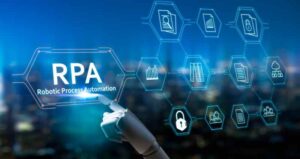 RPA tools automate repetitive tasks, reducing human error and improving operational efficiency. They are ideal for modernizing workflows within legacy systems.
RPA tools automate repetitive tasks, reducing human error and improving operational efficiency. They are ideal for modernizing workflows within legacy systems.
UiPath
UiPath provides a robust platform for automating repetitive tasks across various business processes. Its AI-powered bots can handle everything from simple data entry to complex decision-making processes, significantly reducing manual effort. Visual workflows make it easy for IT teams and business users to design automation scripts, and its extensive integrations ensure compatibility with legacy and modern systems alike.
Key Features
- AI-powered bots
- Visual workflows
- Extensive integrations
Why It Matters
Boosts time and cost savings by automating routine processes. UiPath’s scalability and versatility make it a preferred choice for enterprises ready to enhance operational efficiency and reduce human error.
Automation Anywhere
Automation Anywhere offers a cloud-native RPA platform that enables enterprises to automate complex workflows efficiently. Its AI-driven bots can intelligently adapt to changing processes, making them ideal for dynamic business environments. The platform also provides real-time analytics, allowing organizations to monitor automation performance and identify areas for optimization.
Key Features
- Cloud-native architecture
- AI-driven bots
- Real-time analytics
Why It Matters
Offers scalability and ease of deployment, even for complex workflows. Its real-time analytics capabilities provide actionable insights, ensuring that automation efforts align with business objectives.
Legacy Code Refactoring Tools
For systems that cannot be completely replaced, refactoring tools enable organizations to optimize and modernize existing codebases without significant disruptions.
CAST Highlight
CAST Highlight provides advanced code analysis to identify technical debt, evaluate code quality, and assess cloud-readiness. Offering actionable recommendations to prioritize refactoring efforts, it helps IT teams reduce risks and streamline modernization. By delivering insights into dependencies, vulnerabilities, and opportunities for optimization, CAST Highlight ensures long-term sustainability and prepares applications for migration to modern environments.
Key Features
- Code analysis
- Cloud-readiness assessments
- Actionable recommendations
Why It Matters
Identifies and addresses technical debt, paving the way for long-term sustainability. With its focus on cloud-readiness, CAST Highlight helps enterprises align their legacy systems with future technology strategies.
Visual Studio Code with Refactoring Extensions
Visual Studio Code, enhanced with refactoring extensions such as Prettier, ESLint, or Python Refactor, provides an efficient platform for incremental code modernization. Its lightweight architecture and extensive library of extensions make it highly customizable for diverse development needs. The IDE’s debugging tools and intelligent suggestions simplify code refactoring, improving developer productivity while ensuring high-quality outputs.
Key Features
- Lightweight IDE
- Extensive plugin ecosystem
- Support for multiple languages
Why It Matters
Offers cost-effective, flexible solutions for incremental modernization. Its adaptability makes it an ideal choice for enterprises looking to modernize without replacing entire systems.
Get Ahead Of The Competition In 2025
The tools outlined above represent the best-in-class options available in 2025, each catering to specific challenges and opportunities within the modernization journey. By leveraging these tools, Directors of IT and IT managers can deliver streamlined operations, actionable insights, and measurable ROI, key outcomes for any successful modernization initiative.
When evaluating these tools, prioritize those that align with your organization’s goals and existing infrastructure. With the right tools and a strategic approach, legacy modernization becomes not just a necessity but a competitive advantage. To begin your modernization project contact Orases today.





